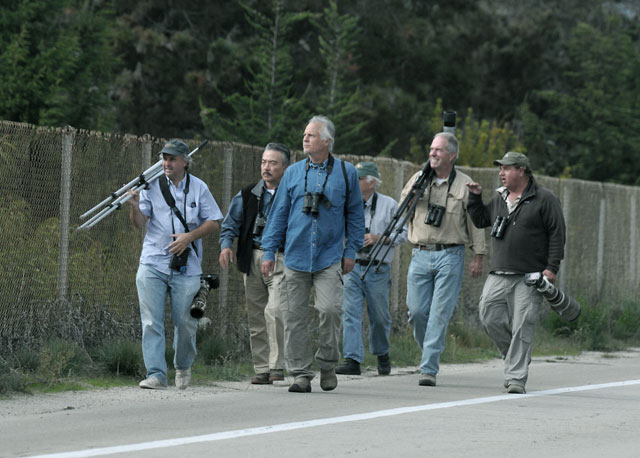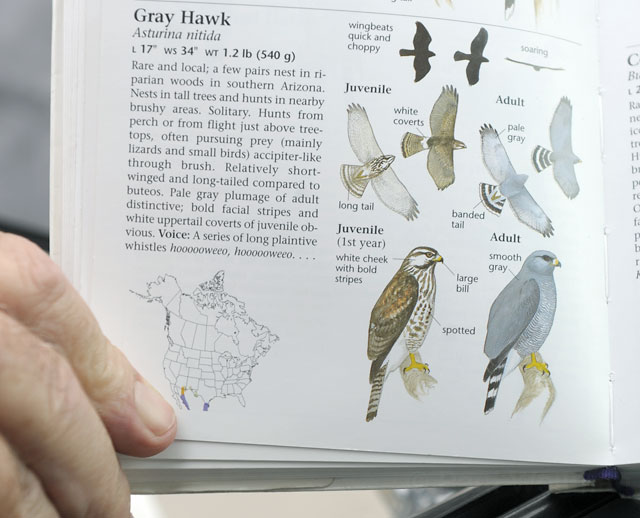First Gray Hawk Sighting in California?
Tropical Bird of Prey Spotted in Carpinteria Sunday Afternoon
On his drive to see some geese Sunday afternoon, Central Coast birder Eric Culbertson spotted a small raptor he’d never seen before. It was sitting sentry on a power line, scanning the landscape off Via Real in Carpinteria. So Culbertson double-backed, parked, and photographed the young bird of prey, likely the first reported sighting of a gray hawk in California.
At the time, Culberston didn’t know what he had. But recognizing it was something special, he sent the images that night to a friend and fellow birder who passed them along to a raptor expert in New Jersey. Soon thereafter, Culbertson — a 25-year-old Carpinteria native and Humbolt University student who’s done bird surveying work for the Forest Service — heard back that he had spotted a species never before seen in California. The tropical gray hawk is native to Mexico and Central America and nests in parts of the southwest United States. In their younger years the hawks have dark brown backs and white bellies with brown spots. When mature, they take on a dramatic, solid gray coloring.

On Monday morning, Culberston made the sighting public by posting the time and location of the encounter on a Yahoo listserv. The posting went “viral” among avian fans near and far, including birding bigwigs like Guy McCaskie and Paul Lehman. Some drove up from San Diego, and others made the trip down from North County. Decked out with binoculars, field guides, and cameras with long lenses, they descended Monday afternoon upon Via Real and watched the bird hunt around the Padaro Lane exit and near Santa Claus Lane.
Culberston explained that the photos and info he and others collected will be submitted to the California Bird Records Committee for official verification. He was credited in late September for spotting the first white ibis in Santa Barbara County and said he counts himself lucky to live in such a rich and well-respected birding community.

Taking special care to note he’s not a gray hawk expert, Culberston theorized that the young bird, which is likely 2 ½ to 3 years old, may be in the midst of a migration stage called “post-breeding dispersal,” or it might have simply lost its way. He said it could stick around town if it thinks it’s found a consistent food source, or it may simply move on. Gray hawks are solitary creatures and are not typically long-distance migrators. Their wingspans reach 35 inches when full grown.



